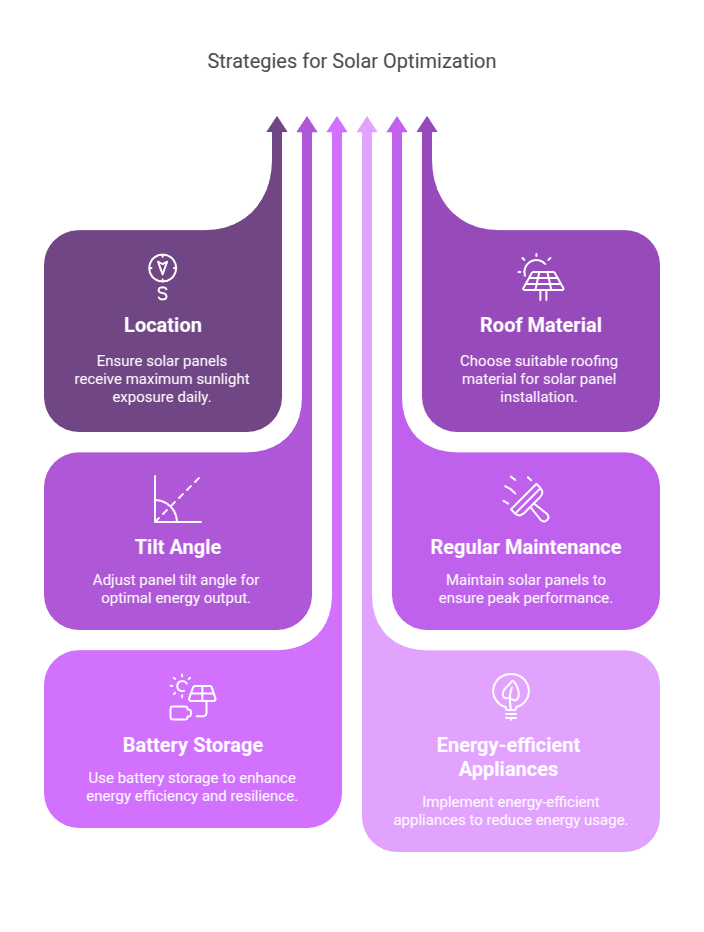Are you tired of paying excessive electricity bills every month while also being concerned about the negative impact of traditional energy sources on the environment?
If the answer is yes, then installing solar panels on your commercial or industrial building is the perfect solution for you.
To gain the most out of your solar panels, you need to consider various factors, such as the location of your plant/building, the angle and placement of your solar panels, the type of roofing material you have, and regular maintenance.
Neglecting any of these factors can reduce the efficiency of your solar panels and lead to an increase in your energy bills. Additionally, investing in energy-efficient appliances and adding battery storage can further enhance the benefits of your rooftop solar system. By implementing these tips and tricks, you can ensure that your solar system is performing at its best, providing you with clean and renewable energy and saving you money on your energy bills.
So, why wait?
Let’s explore tips and tricks to help you gain the most out of your solar panels for a sustainable future.
Understanding Rooftop Solar Potential
Before delving into tips and tricks, it’s crucial to understand what rooftop solar potential means. Rooftop solar potential refers to the amount of solar energy that can be generated by installing solar panels on a rooftop.
The amount of solar energy which can be harnessed relies on several factors, including the size and orientation of the rooftop, the efficiency of the solar panels, the angle at which they are installed, and the amount of sunlight the area receives.
Maximizing Rooftop Solar Potential
To maximize rooftop solar potential, companies must optimize the factors that affect solar energy generation. To help you achieve that, here are some tips and tricks:
1. Location: The location of your rooftop solar system is critical for optimizing solar potential. Ensure that the solar panels are placed in a location that receives maximum sunlight exposure throughout the day. Consider factors such as shade from nearby buildings or trees, the orientation of your building, and tilt angle.
2. Roof Material: The type of roofing material you have, can impact your solar potential on commercial or industrial buildings. Asphalt shingles are easy to install solar panels on, while some types of clay or slate tiles may require additional structural support to accommodate the weight of the panels.
3. Tilt Angle: The tilt angle of your solar panels can significantly impact energy output. Panels that are angled between 30-45 degrees typically provide the highest energy output. Additionally, the tilt angle should be adjusted based on your location’s latitude to ensure maximum solar exposure.
4. Regular Maintenance: Regular cleaning and maintenance of your solar panels can help optimize their performance. Ensure that your panels are free from debris, dust, and bird droppings, which can obstruct sunlight and decrease energy output. You should also inspect the wiring, inverter, and other components of your solar system to ensure they are functioning correctly.
5. Battery Storage: Adding a battery storage system to a commercial or industrial building’s solar system can increase energy efficiency, reduce energy costs, provide backup power, and enhance overall resilience.
6. Energy-efficient Appliances: Investing in energy-efficient equipment can further enhance the benefits of your rooftop solar system for commercial or industrial buildings. Energy-efficient equipment such as lighting, HVAC systems, and machinery can consume less energy, reduce overall energy usage, and increase savings. When purchasing equipment, look for those with high energy star ratings and consider retrofitting existing equipment with energy-efficient upgrades. This will not only increase the efficiency of your solar system but also improve the overall sustainability of your building or industry.

Choosing a Reliable Solar Service Provider: Choosing a reliable and professional rooftop solar service provider is crucial to ensure your solar system is well-designed and maintained. The provider should use high-quality solar panels and equipment and have years of experience in the industry. Hartek Group is an excellent option for those looking for a reliable and professional rooftop solar company in India.
Wrap Up
Maximizing your rooftop solar potential involves optimizing several factors, including location, roof material, tilt angle, regular maintenance, energy-efficient appliances, and battery storage. By implementing these tips and tricks and choosing a reliable solar service provider, you can ensure that your rooftop solar system is performing at its best, providing you with a clean and sustainable future.
Frequently Asked Questions
-
What is rooftop solar potential?
Rooftop solar potential refers to the amount of solar energy that can be generated from installing solar panels based on factors like roof size, tilt, and sunlight exposure. -
How can I maximize my rooftop solar potential?
Maximize your solar potential by optimizing panel placement, tilt angle, ensuring clean panels, and investing in energy-efficient appliances and battery storage. -
Why is roof material important for solar panel installation?
Roof material affects the ease of solar panel installation. Materials like asphalt shingles are ideal, while clay or slate tiles may need additional structural support. -
How does battery storage enhance solar system efficiency?
Battery storage allows excess solar energy to be stored and used during non-sunny periods, reducing energy costs, providing backup power, and enhancing resilience. -
Why should I choose a reliable solar service provider?
A professional solar provider ensures optimal system design, installation, and maintenance, using high-quality equipment to maximize solar efficiency and longevity.



